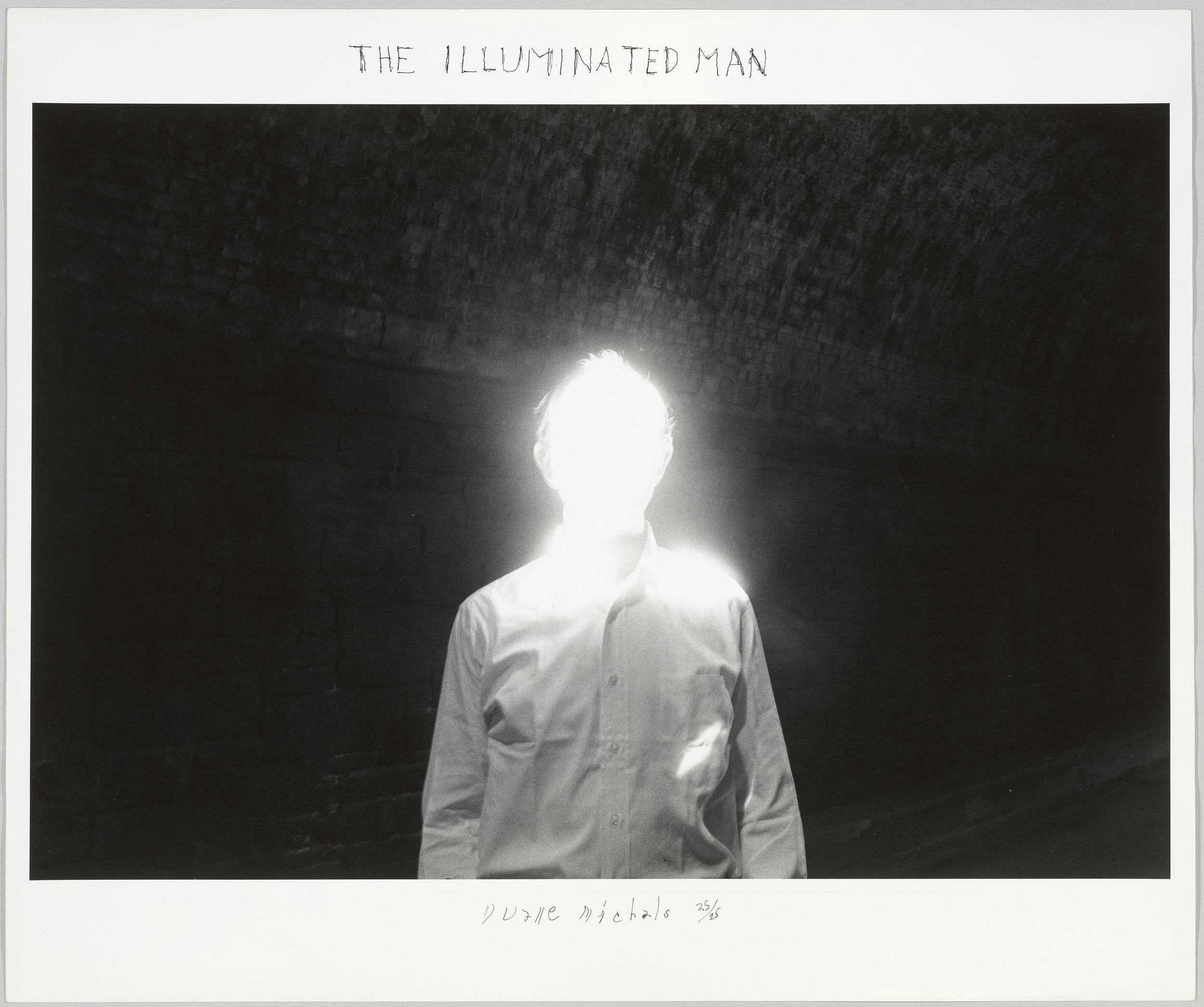Duane Michals in Conversation with Elisabeth Biondi
© Christopher Marklein
Written by Alessandra Schade
“I’m going to tell a joke,” Duane Michals says to a crowd of wide-eyed photography students and silver-haired supporters seated in folding chairs in a spacious School of Visual Arts classroom. He goes on to tell a classic joke, the kind that might circulate through chain emails in a Florida retirement home. Modest laughter fills the echoing room. Duane Michaels laughs. “I’ll say anything to be funny.” The question he was supposedly answering, asked by the moderator Elisabath Biondi, was “are you Buddhist?” It’s hard to pinpoint exactly where he had derailed.
The talk continues in this fashion. A question posed by Biondi, contemplated by Michals for all-too brief a moment, before he wanders off the interviewer's path – into the forested brambles of his mind. Michals is unabashedly honest and direct; his vulnerability with the audience makes him all the more likeable. He tells us about his parents’ sexless marriage, his mother’s undeserved disappointment in him, his father’s repressed hatred for his mother, and his Catholic upbringing which he likens to “a red wine stain on a white collared shirt.” There seems as if there is nothing he won’t divulge to his audience, whether it’s through words or with photography.
© Christopher Marklein
Michals has shot everything from fashion spreads for Vogue Magazine, to the 'Synchronicity' album cover for The Police, to the 1968 Summer Olympics. Over the course of his impressive career, he’s taken portraits of Andy Warhol, René Magritte, and Marcel Duchamp. He often marks his prints with poetic limericks and observations. He explains, “I need words because I grow tired of the silence of the medium.”
His contradictory personality, which toggles between uninhibited silliness and sincerity, is present in every ramble. It can be difficult to discern his tone at times – what is said in jest and what should be frantically written down as a 21st century pearl of wisdom. “Just live. Don’t try to make art.” He says in response to Biondi’s question regarding his work. He continues, “Oh god, I hate that word, ‘art.’ Grow up and get over yourself. These millenials and their ‘art.’ They couldn’t possibly know what ‘art’ is. I hate art.” Biondi looks perplexed. “You don’t hate art,” she states. “Well I hate the art world. I’ll tell you that much.”
© Christopher Marklein
And who doesn’t share at least some of his antipathy? The art world Michals is referring to is notoriously pretentious, a result of being entrenched in the classist traditions of Western art culture, where a small elite have controlled the commission and distribution of art for centuries now. While we may be slowly breaking out of the molds of our fraught history – from Dada to Guerilla to Street art – there still remains a sinister proclivity to cater to international Ultra High Net Worth Individuals or, “UHNWIs,” as they’re called, who are seduced by the lure of investment and prestige. Duane Michals reminds us, as artists and patrons alike, to not take ourselves so seriously.
Michals, a self-proclaimed rebel, shows us the importance of maintaining a sense of humor and wonder. At 88, he continues to try new mediums and art forms. He’s recently taken a hand at sculpture and embraces the awkwardness of artistic trial periods. Making mistakes is instrumental to his creative process; he acknowledges that many of the risks he’s taken were borne from mistakes. “I never have a destination when I begin. I do things for the pleasure of ‘doing.’” It is obvious that Michals has fun with his work. The four films he presents at SVA: Yort, Somnambulist, Ulysses, and The End, are extremely playful. The surrealist overlay of translucent visuals, like jesters, toy blocks, and rolling dice, creates a textured display of joyous imagery. The lightness inevitably turns dark, as he summons his late father in one film – asking him all the questions you might wish to ask an absentee parent from beyond the grave. His films pose questions to the audience about our conflicting assumptions on love and death.
© Christopher Marklein
It seems as if, at 88, Michals is still searching for answers. He is a firm believer that age is a blessing. “Age,” he says, “should be a reward, not a punishment! Being young is awful! You know nothing!” Michals satirical advice and unconventional outlook on the contemporary art landscape, is nothing if refreshing. Perhaps, it takes examining a practice our society glamorizes and exalts, to see the beauty in its simplicity.











